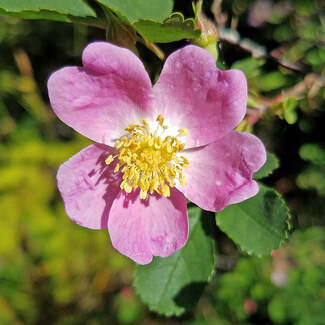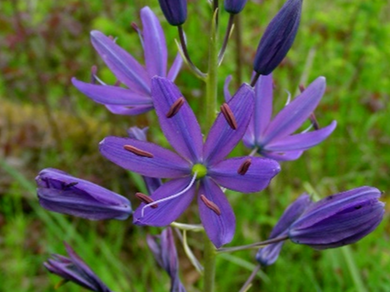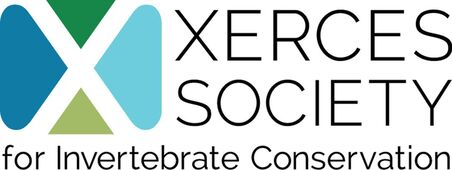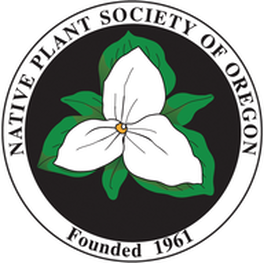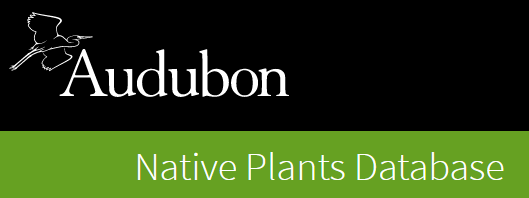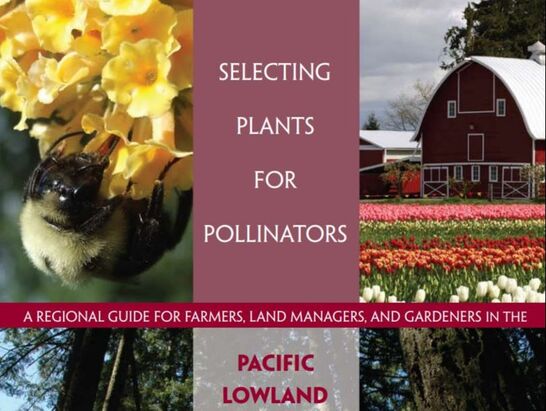attract pollinators • preserve our natural landscape • provide wildlife habitat• use less water & chemicals
Enrich your LAND with native plants
|
planning and planting your native gardenIn this virtual workshop, you will learn how to identify your soil types and pick the best native plants for your yard and garden. You’ll also hear about some of our favorite natives, why they are important, and where to plant them.
Workshop partners include the Luckiamute Watershed Council, North Santiam Watershed Council, USDA Natural Resources Conservation Service, Willamette Habitat Restoration Fund, and Polk, Marion, Benton and Yamhill Soil & Water Conservation Districts. |
|
native plant resources
uNITED STATES DEPARTMENT OF AGRICULTURE (usda)
NATURAL RESOURCES CONSERVATION SERVICE (nrcs)
The PLANTS DatabaseThe PLANTS Database provides standardized information about the vascular plants, mosses, liverworts, hornworts, and lichens of the U.S. and its territories. It includes names, plant symbols, checklists, distributional data, species abstracts, characteristics, images, crop information, automated tools, onward Web links, and references. This information primarily promotes land conservation in the United States and its territories, but academic, educational, and general use is encouraged.
(USDA, NRCS. 2021. The PLANTS Database (http://plants.usda.gov, 12/21/2021). National Plant Data Team, Greensboro, NC USA.)
|
culturally significant plantsTraditionally, native plants were integrated into every facet of daily living among indigenous people. This collective wisdom about how to tend, judiciously harvest, and use native plants has evolved over thousands of years. As populations of useful native plant species continue to dwindle on tribal and public lands, there is increasing need to assist in the reestablishment of culturally significant plants in various landscapes.
Find information and images of plant species that play a significant role in the lives of Native Americans involved in cultural activities utilizing plants. Guides also contain cultural information about where the plant grows, when and how it is harvested, how it is prepared and used, and its general role in maintaining tribal ethnicity. (PLANTS Help. (n.d.). Retrieved December 21, 2021, from https://plants.sc.egov.usda.gov/assets/docs/PLANTS_Help_Document.pdf#page=4) |
pollinator habitatSelect and get recommendations on plants which will enhance pollinator populations throughout the growing season. These wildflowers, trees, shrubs, and grasses are an integral part of the conservation practices that landowners, farmers, and ranchers install as part of their conservation plan.
(Pollinator Habitat | NRCS Plant Materials Program. (2021). Usda.gov. https://www.nrcs.usda.gov/wps/portal/nrcs/detail/plantmaterials/technical/publications/?cid=stelprdb1044847) |
Oregon State University
OSU Extension - Native plantsThis publication provides an introduction and guide for those who are interested in Pacific Northwest native plants and would like to incorporate natives into their home gardens. Included are:
|
|
This handy chart shows recommended native plants for home gardens in western Oregon. It's categorized into trees, shrubs, groundcovers, herbs and ferns, and annuals. You'll find each plants':
|
OSU Extension has great information on collecting soil samples, finding soil and water testing labs and soil test interpretation.
OregonfloraOregonFlora is based in the Department of Botany & Plant Pathology (BPP) at Oregon State University. For over 25 years, they have been gathering and sharing information about the plants of Oregon to help land managers, gardeners, scientists, restorationists, and plant lovers of all ages understand the plant diversity that surrounds us.
(OregonFlora Gardening with Natives. (n.d.). Oregonflora.org. Retrieved December 21, 2021, from https://oregonflora.org/garden/index.php) |
garden ecology labThe Garden Ecology Lab of OSU studies gardens: the plants, insects, animals, people, decisions and managements practices that either improve or degrade a garden's ability to promote environmental and human health. The underlying premise of their work is that gardens are important and understudied systems, that are key to building more sustainable, healthy and just communities.
|
xerces societyThe Xerces Society for Invertebrate Conservation is an international nonprofit organization that protects the natural world through the conservation of invertebrates and their habitats. As a science-based organization, they both conduct their own research and rely upon the most up-to-date information to guide conservation work.
Go to their Pollinator Conservation Resources for the Pacific Northwest! You'll find region-specific collections of publications, native seed vendors, and other resources to aid in planning, establishing, restoring, and maintaining pollinator habitat—as well as materials to help you learn about the species of invertebrates and native plants you might encounter. (The Xerces Society for Invertebrate Conservation. (2019). The Xerces Society for Invertebrate Conservation. https://xerces.org/) |
native plant society of oregonNPSO works tirelessly for plant and habitat conservation. State conservation chairs track major issues and chapters are involved in local efforts to protect and conserve threatened and endangered species. They carry out rare plant surveys and monitoring programs; They have developed guidelines and policy regarding native plant gardening, ethics, grazing, mining, and forest management; and we are involved in plant salvage and re-introduction.
(NPSO - Home page. (2020). Npsoregon.org. https://www.npsoregon.org/) |
Audubon SocietyEnter your 5-digit zip code to use Audubon’s native plants database and explore the best plants for birds in your area, as well as local resources and links to more information. You can also receive an emailed list of the native plants you've selected, get additional tips on creating your bird-friendly habitat, and help to keep track of your contributions to our efforts to get 1 million native plants for birds in the ground.
(Native Plants. (n.d.). Audubon. https://www.audubon.org/native-plants) |
National Wildlife FederationWhen it comes to attracting beautiful butterflies and birds to your yard or community, the best thing you can do is use native plants. By planting natives, you restore the health and function of your local ecosystem. This website will help you find the best native plants specifically for your area that attract butterflies and moths and the birds that feed on their caterpillars, based on the scientific research of Dr. Douglas Tallamy. This website is designed to help you find the best species to attract the butterflies and birds in your area. Enter your zip code at the top of the page. This will filter search results to give you only plants that are native to your specific area.
|
Plants for pollinatorsThis regional guide is just one in a series of plant selection tools designed to provide information on how individuals can influence pollinator populations through choices they make when they farm a plot of ground, manage large tracts of public land, or plant a garden.
a NAPPC and Pollinator Partnership™ Publication
|
Native plants along streamsThis introductory guide is intended for people who want basic information on natural landscaping, streambank stabilization, and landscaping for wildlife habitat using native plants. This brochure provides a step-by-step, easy-to-use guide to planting Willamette Valley natives along your streambank. Species which are not native, are not found frequently, or are not easily propagated are not covered in this guide. For more detailed information on native plant propagation and identification, please refer to the references at the end of the brochure.
Published by Linn SWCD |
|
Planting trees and shrubs to restore streamside areas, enhance fish and wildlife habitat, improve water quality, and achieve other environmental benefits is increasingly common in Oregon. But the success of riparian plantings varies widely, and some fail outright. Establishing a riparian planting is not easy. This guide describes six steps to help landowners, watershed council members, agency personnel, and others communicate about, plan, and implement successful riparian tree and shrub plantings in the Willamette Valley:
1. Plan your project. 2. Select and obtain plant materials. 3. Prepare the site. 4. Plant your trees right. 5. Take care of the planting. 6. Monitor and learn from results. Published by OSU Extension |



